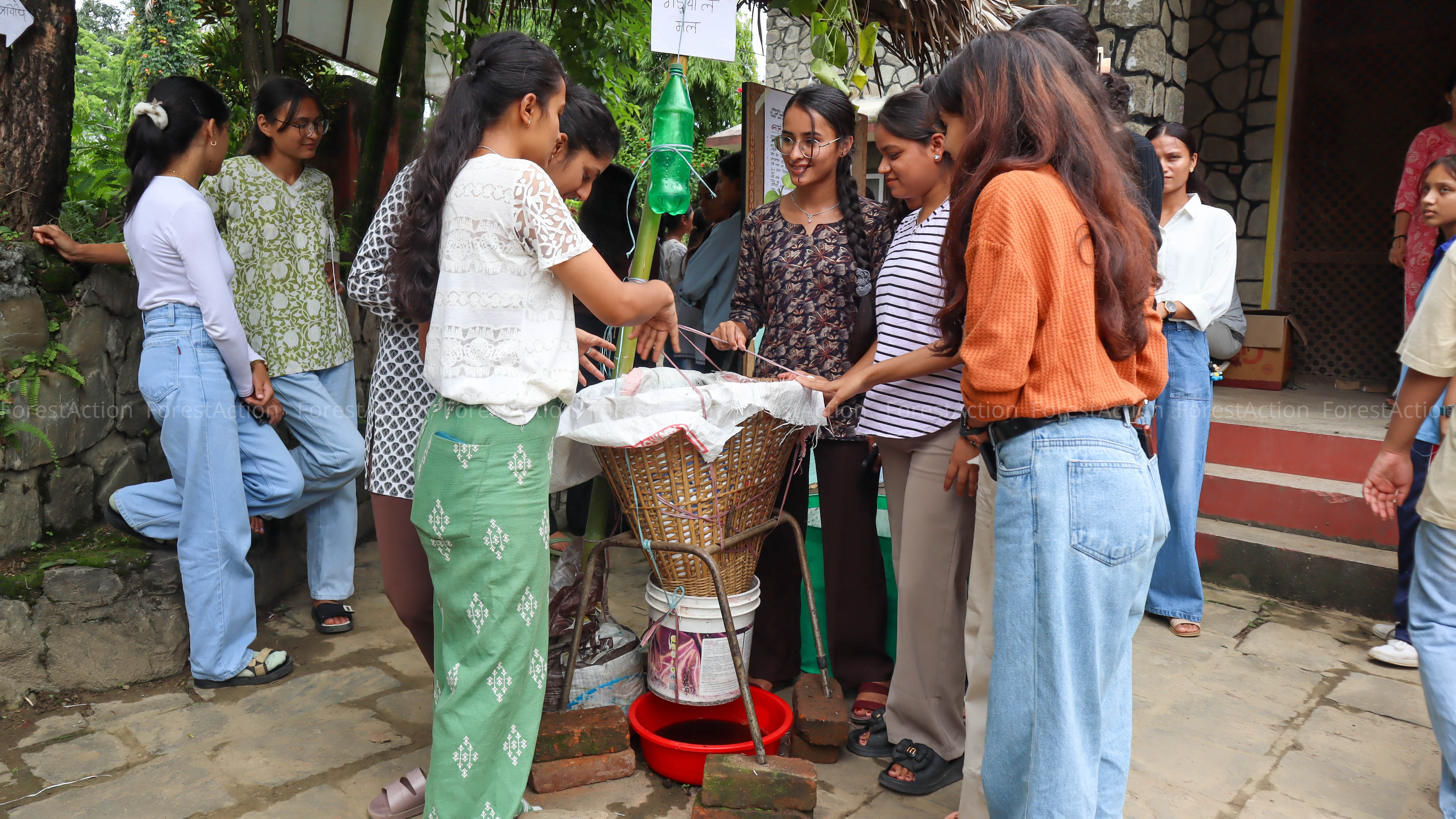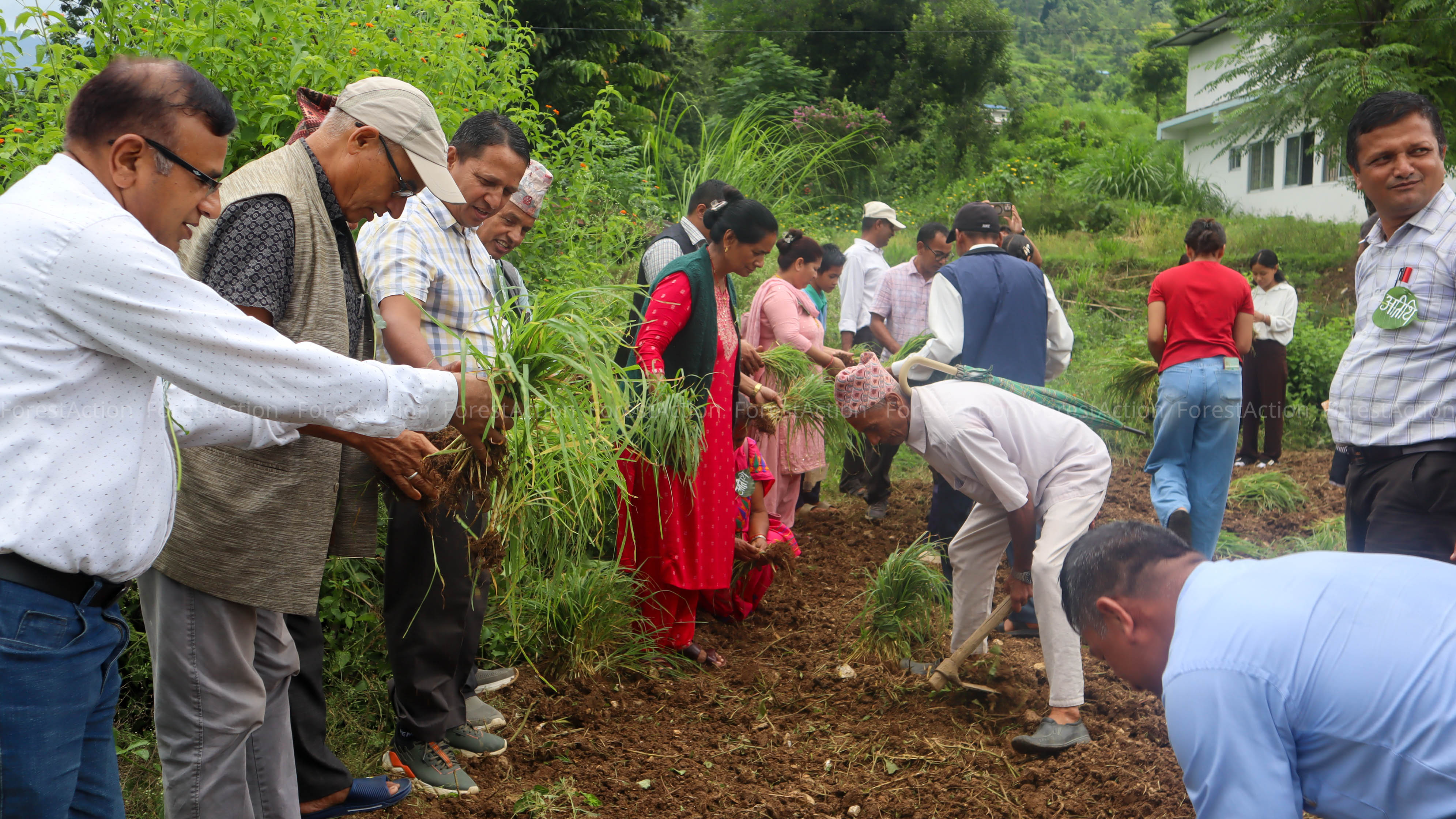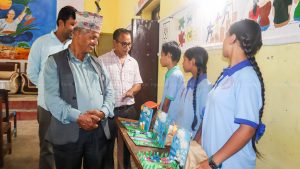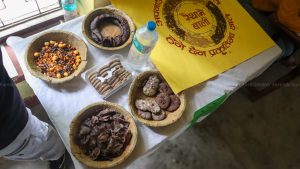
As per the decision of the Council of Ministers made on 23rd Ashad, 2082, National Millets Day will be celebrated nationwide on Shrawan 16 every year. Accordingly, this year marked the first-ever celebration of National Millets Day across Nepal under the slogan, “Diet of Millet-Based Dishes: Foundation of Food Security and Healthy Living”.
In this context, ERI Nepal in collaboaration with ForestAction Nepal, serving as the secretariat of the Alliance of Agriculture for Food (AAF), in collaboration with Youth for Community Transformation (YCT) Nepal and Sundarbazar Municipality, and with support from Lamjung Krishi Campus, organised a series of events to mark Millets Day on the campus premises.
The program was attended by around 300 participants, including the Mayor, Deputy Mayor, Chief Administrative Officer, an agriculture technician from Sundarbazar Municipality, the Campus chief, professors, technicians, and students, other staff from Lamjung Krishi Campus, representatives from Besisahar Municipality, an agriculture technician from Agriculture Knowledge Centre in Lamjung, lower secondary and secondary level students from different Schools in Sundarbazar, AAF members, lead farmers, representatives of FECOFON and AFFON, and journalists representing various media houses in Lamjung.
The program was officially inaugurated by transplanting millets in the campus field, followed by a formal session where guests delivered speeches highlighting the importance of millet in our daily diets and the need for an awareness program to conserve and promote our local and indigenous crops that are now on the verge of extinction.
During the event, students from the Lamjung Campus also performed a drama titled “Kodoksi” following the format of Shark Tank, the popular global business pitch show. The drama highlighted the potential of millet-based enterprises by showcasing the international branding of a locally produced millet-based alcoholic beverage.
Additionally, an exhibition was set up to showcase local and indigenous seeds of various crops, including medicinal plants, collected from different parts of the country. The exhibition also featured 3D models of alternative agricultural practices, such as permaculture, integrated farming, rainwater harvesting, and other low-cost technologies, including mulching, vermicomposting, and Azolla cultivation, as well as post-harvest technologies. Additionally, various infographics on Nepalese agriculture and artworks emphasising the importance of sustainable agriculture were displayed within the campus premises.




